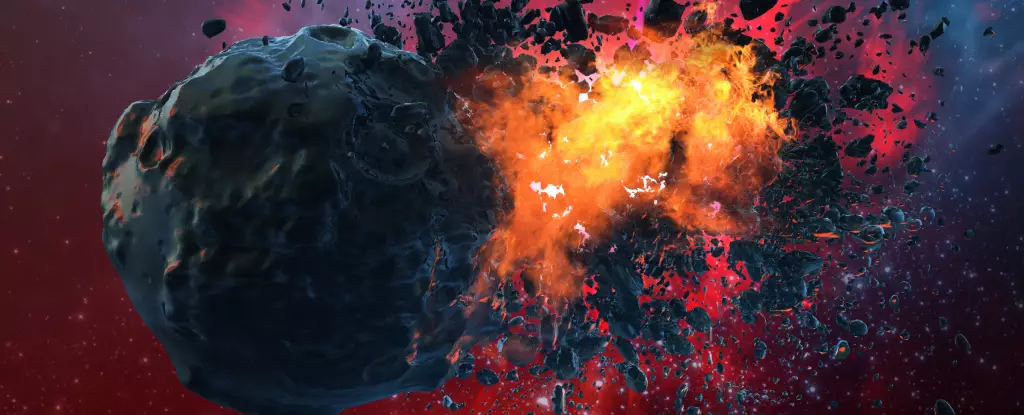In recent discussions regarding asteroid threats to Earth, a particular focus has been placed on a newly identified asteroid designated 2024 YR4. Experts estimate that there is a 3.1 percent chance of impact on December 22, 2032—a figure that, while seemingly small, has garnered significant attention. NASA has indicated this probability is the highest recorded for a large asteroid in modern times. Given the potential for extensive destruction, such as leveling an entire city, even a marginal risk warrants scrutiny and preparation.
Richard Moissl, the head of the European Space Agency’s planetary defense department, has urged calm amidst rising concerns. According to Moissl, although the odds may fluctuate as additional data is gathered, there is a consensus that even if the probability were to approach alarming levels, humanity is not without options for defense. This dismisses the notion of helplessness against cosmic threats and initiates a conversation surrounding existing and emerging strategies intended to protect our planet.
One of the most well-known methods for asteroid deflection was tested successfully in 2022 with NASA’s Double Asteroid Redirection Test (DART). The mission involved crashing a spacecraft into the 160-meter-wide asteroid Dimorphos, demonstrating that it is indeed possible to alter an asteroid’s course. This marked a significant milestone in planetary defense, showcasing technological capability against potential celestial threats.
Beyond DART, scientists have proposed several alternative strategies to manage an incoming asteroid. One technique, known as the gravity tractor method, involves deploying a spacecraft close to the asteroid without physically touching it, utilizing the vehicle’s gravitational field to subtly adjust the asteroid’s trajectory. Another innovative approach involves positioning a spacecraft with ion thrusters that would emit a constant stream of ions directed at the asteroid, gradually nudging it off its impending collision path.
Additionally, an unconventional idea involves altering the asteroid’s surface by painting one side white. This would theoretically increase its reflectiveness, causing solar radiation pressure to impact its trajectory over time. Such subtle methods highlight the diverse range of potential actions available to space researchers, contingent upon the timeline before a predicted impact.
The discussion of near-Earth objects often conjures images reminiscent of the film “Armageddon,” wherein a nuclear device is used to destroy an asteroid. However, the real-world application of nuclear technology presents a myriad of challenges and risks. The emerging strategy would involve deploying a nuclear device to detonate at a safe distance from the asteroid, arguably more effective than drilling into its core. According to recent lab experiments, the x-rays generated from such a blast could vaporize the asteroid’s surface, effectively repelling it by sending debris flying in the opposite direction.
Nevertheless, this approach is fraught with complications—both ethical and technical. Concerns about nuclear fallout, space policy, and international cooperation complicate the implementation of nuclear solutions. Moreover, there’s the pressing uncertainty that a nuclear explosion might shatter the asteroid into smaller yet still hazardous fragments hurtling toward Earth.
Emerging technologies also present innovative methods of astro-defense, such as deploying high-energy laser beams to vaporize portions of an asteroid’s surface. Laboratory simulations have indicated that this approach could exert sufficient force to alter an asteroid’s trajectory. While promising, laser mitigation techniques are currently not prioritized over other methods, highlighting the need for a multifaceted defense strategy.
As the global community continues to study 2024 YR4 and other similar celestial bodies, the urgency of cooperative preparation becomes apparent. While expert recommendations will inform actions taken against potential threats, final decisions will rest with world leaders. The advantage of time—potentially seven and a half years—allows for strategic planning, evacuation protocols, and public readiness in response to a confirmed threat.
Ultimately, even as speculation swirls around strategies and probabilities, it is crucial to acknowledge that the chances remain predominantly in humanity’s favor, with approximately 97 percent likelihood that 2024 YR4 will miss Earth. While the existential threat posed by asteroids should not be understated, the collaborative efforts among scientists and government agencies represent a determined stand against the cosmic unknown, affirming that preparation and unity are pivotal in safeguarding our planet.


Leave a Reply